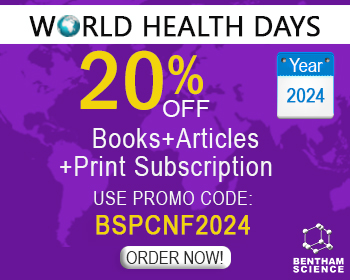Abstract
Retinoblastoma is the intraocular malignancy that occurs during early childhood. The current standard of care includes chemotherapy followed by focal consolidative therapies, and enucleation. Unfortunately, these are associated with many side and late effects. New drugs and/or drug combinations need to be developed for safe and effective treatment. This compelling need stimulated efforts to explore drug repurposing for retinoblastoma. While conventional drug development is a lengthy and expensive process, drug repurposing is a faster, alternate approach, where an existing drug, not meant for treating cancer, can be repurposed to treat retinoblastoma. The present article reviews various attempts to test drugs approved for different purposes such as calcium channels blockers, non-steroidal antiinflammatory drugs, cardenolides, antidiabetic, antibiotics and antimalarial for treating retinoblastoma. It also discusses other promising candidates that could be explored for repurposing for retinoblastoma.
Keywords: Drug repurposing, Retinoblastoma, Calcium channel blockers, Cardenolides, NSAIDs, Antimalarials, Antidiabetics, Antibiotics.
[http://dx.doi.org/10.1615/CritRevOncog.2015013711] [PMID: 26349417]
[http://dx.doi.org/10.1097/01.icu.0000193079.55240.18] [PMID: 16794434]
[http://dx.doi.org/10.1038/sj.onc.1209622] [PMID: 16936756]
[http://dx.doi.org/10.12688/f1000research.11941.1] [PMID: 29755733]
[http://dx.doi.org/10.1007/s11060-012-0922-4] [PMID: 22802019]
[http://dx.doi.org/10.1002/pbc.20793] [PMID: 16572402]
[PMID: 2084992]
[http://dx.doi.org/10.1001/archopht.117.7.885] [PMID: 10408452]
[PMID: 2084997]
[http://dx.doi.org/10.5497/wjp.v2.i3.65]
[http://dx.doi.org/10.1016/S0161-6420(93)31667-2] [PMID: 8437830]
[http://dx.doi.org/10.1001/archopht.117.6.766] [PMID: 10369587]
[http://dx.doi.org/10.1111/j.1442-9071.2007.01602.x] [PMID: 18290958]
[http://dx.doi.org/10.1097/ICU.0b013e328338676a] [PMID: 20224400]
[http://dx.doi.org/10.1007/978-3-319-19467-7_7]
[http://dx.doi.org/10.2174/1389557515666150722100610] [PMID: 26202204]
[http://dx.doi.org/10.4274/tjo.06888] [PMID: 27800245]
[PMID: 8064951]
[http://dx.doi.org/10.1001/archopht.121.8.1120] [PMID: 12912689]
[http://dx.doi.org/10.1016/j.ajo.2006.02.044] [PMID: 16876514]
[http://dx.doi.org/10.1002/cncr.23988] [PMID: 19072983]
[http://dx.doi.org/10.1016/j.bbamcr.2015.11.032] [PMID: 26658642]
[http://dx.doi.org/10.1007/s00424-013-1427-5] [PMID: 24407946]
[http://dx.doi.org/10.1016/j.apsb.2016.11.001] [PMID: 28119804]
[http://dx.doi.org/10.1016/j.bbamem.2015.03.034] [PMID: 25843679]
[http://dx.doi.org/10.1016/j.ceca.2006.04.017] [PMID: 16797068]
[http://dx.doi.org/10.1016/j.ceca.2006.04.029] [PMID: 16765439]
[http://dx.doi.org/10.1007/s00424-014-1444-z] [PMID: 24449277]
[http://dx.doi.org/10.1016/S0735-1097(99)00447-7] [PMID: 10588195]
[http://dx.doi.org/10.1016/0006-8993(92)90162-3]
[http://dx.doi.org/10.1152/jn.2002.88.1.196] [PMID: 12091545]
[http://dx.doi.org/10.1124/mol.62.2.210] [PMID: 12130671]
[PMID: 26742337]
[http://dx.doi.org/10.2165/00003495-199600525-00004] [PMID: 8922554]
[http://dx.doi.org/10.1146/annurev.pharmtox.38.1.97] [PMID: 9597150]
[http://dx.doi.org/10.1007/1-4020-5688-5_1] [PMID: 17612044]
[http://dx.doi.org/10.1016/S0002-9343(97)00203-9] [PMID: 9572314]
[http://dx.doi.org/10.1186/s12935-015-0260-7] [PMID: 26549987]
[http://dx.doi.org/10.1016/j.rmed.2003.09.006] [PMID: 14971881]
[http://dx.doi.org/10.3892/ijo.26.5.1393] [PMID: 15809733]
[http://dx.doi.org/10.1073/pnas.94.7.3336] [PMID: 9096394]
[http://dx.doi.org/10.1016/S0959-8049(01)00160-5] [PMID: 11506967]
[http://dx.doi.org/10.1016/S0145-2126(03)00183-8] [PMID: 14654083]
[http://dx.doi.org/10.1155/2010/215158] [PMID: 20339581]
[http://dx.doi.org/10.1111/j.1755-3768.2009.01765.x] [PMID: 19925514]
[http://dx.doi.org/10.1016/S0002-9394(99)00355-4] [PMID: 10704568]
[http://dx.doi.org/10.1016/j.ajo.2006.05.053] [PMID: 17011855]
[http://dx.doi.org/10.1038/sj.eye.6701938] [PMID: 16123787]
[http://dx.doi.org/10.1136/bjo.2004.064915] [PMID: 16113385]
[http://dx.doi.org/10.1159/000355844] [PMID: 24355977]
[http://dx.doi.org/10.3389/fonc.2013.00181] [PMID: 23875171]
[http://dx.doi.org/10.1155/2014/794930] [PMID: 24895612]
[http://dx.doi.org/10.1007/s10637-013-9984-1] [PMID: 23748872]
[http://dx.doi.org/10.1124/mi.8.1.8] [PMID: 18332483]
[http://dx.doi.org/10.1038/nrd2682] [PMID: 18948999]
[http://dx.doi.org/10.1016/j.bbamem.2007.04.012] [PMID: 17524349]
[PMID: 17514873]
[http://dx.doi.org/10.1021/np050226l] [PMID: 16309315]
[PMID: 16528968]
[http://dx.doi.org/10.1167/iovs.08-3158] [PMID: 19151399]
[http://dx.doi.org/10.3109/13816810.2010.544530] [PMID: 21446853]
[http://dx.doi.org/10.1167/iovs.14-16239] [PMID: 26176875]
[http://dx.doi.org/10.1097/CAD.0000000000000236] [PMID: 26053275]
[http://dx.doi.org/10.1007/s00411-016-0679-9] [PMID: 28184999]
[http://dx.doi.org/10.1016/j.biopha.2016.06.047] [PMID: 27416556]
[http://dx.doi.org/10.3892/ol.2015.3554] [PMID: 26622783]
[PMID: 26722443]
[PMID: 11594239]
[http://dx.doi.org/10.1155/2008/704165] [PMID: 18615184]
[http://dx.doi.org/10.2174/156652407781695765] [PMID: 17896990]
[http://dx.doi.org/10.3109/10799893.2016.1171341] [PMID: 27133446]
[http://dx.doi.org/10.1136/bmj.e3645] [PMID: 22653981]
[http://dx.doi.org/10.2337/dc10-1068] [PMID: 21447663]
[http://dx.doi.org/10.1016/j.molmed.2007.08.001] [PMID: 17905659]
[PMID: 29422962]
[http://dx.doi.org/10.1016/j.urolonc.2011.01.003] [PMID: 21676631]
[http://dx.doi.org/10.1111/j.1872-034X.2012.01007.x] [PMID: 22524458]
[http://dx.doi.org/10.1016/j.ygyno.2017.07.120] [PMID: 28760367]
[http://dx.doi.org/10.1158/1078-0432.CCR-09-1805] [PMID: 20215559]
[http://dx.doi.org/10.3727/096504011X13021877989838] [PMID: 21776823]
[http://dx.doi.org/10.3892/ijo.2014.2650] [PMID: 25215935]
[http://dx.doi.org/10.1152/ajpcell.00047.2010] [PMID: 20592239]
[http://dx.doi.org/10.1111/j.1600-051X.2004.00558.x] [PMID: 15312090]
[http://dx.doi.org/10.1016/j.phrs.2010.12.003] [PMID: 21182947]
[http://dx.doi.org/10.1016/j.bbrc.2016.02.120] [PMID: 26944016]
[http://dx.doi.org/10.1139/cjpp-2015-0481] [PMID: 26913972]
[http://dx.doi.org/10.1371/journal.pone.0134201] [PMID: 26207375]
[http://dx.doi.org/10.18632/oncotarget.12488] [PMID: 27732942]
[http://dx.doi.org/10.18632/oncotarget.6419] [PMID: 26621850]
[http://dx.doi.org/10.1016/j.bbrc.2016.02.072] [PMID: 26902121]
[http://dx.doi.org/10.3332/ecancer.2015.513] [PMID: 25729426]
[http://dx.doi.org/10.1016/j.exer.2013.10.009] [PMID: 24157270]
[PMID: 26191215]
[PMID: 26379864]
[http://dx.doi.org/10.1371/journal.pone.0031004]
[http://dx.doi.org/10.1111/cas.13540] [PMID: 29453896]
[http://dx.doi.org/10.3892/ol.2013.1259] [PMID: 23759954]
[http://dx.doi.org/10.1016/j.bbrc.2016.01.046] [PMID: 26780727]
[http://dx.doi.org/10.1139/cjpp-2016-0124] [PMID: 27831748]
[http://dx.doi.org/10.3390/ijms18122603] [PMID: 29207489]
[http://dx.doi.org/10.18632/oncotarget.5632] [PMID: 26497553]
[http://dx.doi.org/10.3892/or.2013.2574] [PMID: 23818062]
[http://dx.doi.org/10.1016/j.bbrc.2018.06.049] [PMID: 29902460]
[http://dx.doi.org/10.1179/joc.1996.8.4.295] [PMID: 8873836]
[http://dx.doi.org/10.7150/thno.17451] [PMID: 28529629]
[http://dx.doi.org/10.3332/ecancer.2014.485] [PMID: 25075216]
[http://dx.doi.org/10.1016/S0161-6420(99)90406-2] [PMID: 10519590]
[http://dx.doi.org/10.1016/j.ajo.2006.02.044] [PMID: 16876514]
[http://dx.doi.org/10.3892/or.2013.2279] [PMID: 23404427]
[PMID: 23198068]
[http://dx.doi.org/10.1002/pbc.20380] [PMID: 15795880]
[PMID: 1329226]
[http://dx.doi.org/10.1001/archophthalmol.2011.130] [PMID: 21670340]
[http://dx.doi.org/10.1136/bjophthalmol-2013-303885] [PMID: 24187047]
[PMID: 29600179] [http://dx.doi.org/[DOI: 10.18240/ijo.2018.03.15]
[http://dx.doi.org/10.4103/0301-4738.154390] [PMID: 25827545]
[PMID: 21813093] [http://dx.doi.org/10.1016/j.ophtha.2011.02.005]



























